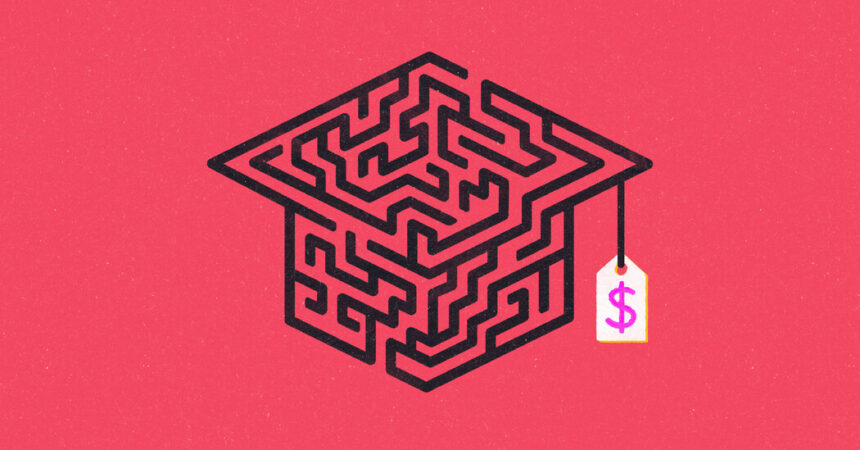Student Loan Collections Restarted: What You Need to Know
After a five-year pause, the Trump administration is set to resume forced collections on federal student loans, which could include garnishing borrowers’ paychecks. This marks the end of pandemic-era relief, which began when President Trump paused federal student loan payments in March 2020.
The Biden administration extended the freeze several times, and payments resumed only in October 2023. However, penalties were relaxed for the first year of repayment, and borrowers were not penalized for slipping behind until last fall. Now, with those penalties beginning to appear, borrowers who fell behind are seeing their credit scores plunge, including more than five million borrowers in default and millions more projected to be on the brink.
Student Loan Repayment Programs
At the same time, the Biden-era repayment program known as SAVE, which ties a borrower’s loan payments to income and household size, has been frozen since August. This plan, which has eight million enrollees, has been stuck in legal limbo, an evolving situation that threatens to upend income-driven repayment plans.
What to Do if Your Loans Are in Default
If you are among the five million borrowers in default or those with loans 270 days or more overdue, you should expect to receive an email from the Federal Student Aid office in the next few weeks, urging you to get in touch with its Default Resolution Group. This unit can help get your loan situation sorted.
Consequences of Default
If your loans remain in default, serious consequences can occur. The government can seize your entire tax refund (as long as it doesn’t exceed your debt amount) and up to 15 percent of monthly Social Security retirement and disability benefits and your paycheck. Credit standing can also be damaged, making it more difficult to qualify for apartments or obtain new loans.
Getting Out of Default
You can pay the loan in full, but this is not an option for most people. More feasible alternatives include consolidating the defaulted loans or rehabilitating the loan, which requires making nine out of 10 consecutive reasonable payments, determined by loan holders using a formula.
Income-Driven Repayment Plans
Income-driven repayment plans, a decades-old safety net that ties the size of your monthly loan payments to your income level, are often a go-to option in times of financial distress. However, there are fewer income-driven options available at the moment, as the entire landscape was shaken up after two groups of Republican-led states challenged the Saving on a Valuable Education (SAVE) plan, the more affordable income-driven repayment plan introduced by President Biden.
Other Repayment Plans
Beyond income-driven programs, there are repayment plans that can lower your monthly obligation, such as graduated repayment, where payments start lower and rise over time, and extended repayment, which lowers the monthly payment by lengthening the loan term.
Loan Servicing and Recertification
The Education Department has not processed applications for enrollment in any income-driven repayment plans since August, but it is working with federal student loan servicers and expects processing to begin again in May. Borrowers in the Income-Based Repayment (I.B.R.) plan, which Congress enacted, can continue to have their loans forgiven. Payments on PAYE, SAVE, and I.C.R. are counted toward I.B.R. plan forgiveness if the borrower enrolls in the I.B.R. program.
Loan Forgiveness and Public Service Loan Forgiveness
The Saving on a Valuable Education plan is still winding its way through the courts, and enrollees have been in limbo since last summer. Their accounts are in forbearance, which means payments are on hold and interest is not accruing. The Public Service Loan Forgiveness program is still open to government and nonprofit employees such as public school teachers, librarians, and public defenders. After 120 qualifying payments are made, any remaining balance is wiped out. However, most borrowers need to be enrolled in an income-driven repayment plan to be eligible for loan cancellation.
What if You’re in P.S.L.F. but in the SAVE Plan?
You have a couple of options. You can switch to one of the other income-driven repayment plans, which will allow you to earn credit toward forgiveness. Alternatively, you can ride out the SAVE forbearance and use the buy back option to get credit for those months once you have completed 120 months of eligible employment.
What if the Education Department Closes?
President Trump instructed Education Secretary Linda McMahon to begin to shut down the agency, but he cannot do so without congressional approval. He also announced that the student loan portfolio would move to the Small Business Administration, a change that would also require approval. However, Congress has shown no interest in that idea. For now, the loan portfolio remains at the Education Department.
Where to Get Help
You can try the Institute of Student Loan Advisors, a group that provides free guidance to borrowers. The Student Debt Crisis Center has a resource center and holds workshops, and some states, like New York, may offer services to assist borrowers. If you’re having trouble getting the help you need with your servicer, some states have student loan ombudsman offices that can help. The Federal Student Aid office also has a list of frequently asked questions on its website.
Conclusion
The restart of forced collections on federal student loans could have significant consequences for borrowers. It’s important to stay informed and take steps to manage your loan situation effectively.
Reference : https://www.nytimes.com/2025/04/29/business/student-loans-collections.html








